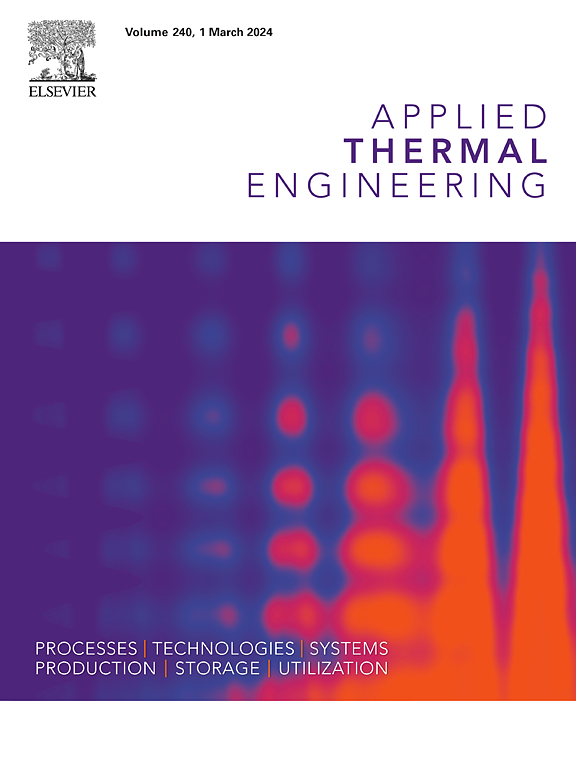固体氧化物燃料电池直接加热时随时间变化的热流优于恒定热流的多准则评价
IF 6.9
2区 工程技术
Q2 ENERGY & FUELS
引用次数: 0
摘要
固体氧化物燃料电池(sofc)的高工作温度虽然具有许多优点,但它延长了加热时间。加速加热过程可能导致严重的温度梯度和随之而来的结构问题。因此,在时间梯度和温度梯度之间取得平衡对SOFC的实际发展至关重要。以往的研究考虑了SOFCs直接加热过程的恒定热通量。然而,本研究在数值上评估了采用时间相关热通量的好处,并使用多准则方法确定了最佳的时间相关热通量函数。在这方面,各种多项式函数,包括线性,二次,三次和四次,以及他们的旋转形式进行了检查。结果表明,从多准则角度(即同时考虑加热时间和温度梯度时),变热流密度函数优于定热流密度函数。结果表明,热流密度上升系数为1 W s−1的线性上升函数,其加热时间为628 s,最大温度梯度为6.18 K cm−1,是最优权衡解。得到的结果突出了随时间的热流密度函数在实现温度梯度和加热持续时间之间的平衡方面的理想潜力。本文章由计算机程序翻译,如有差异,请以英文原文为准。
A multi-criteria assessment to show the superiority of time-dependent heat flux over constant heat flux during direct heating of solid oxide fuel cell
Although the high operating temperature of solid oxide fuel cells (SOFCs) provides several advantages, it extends the heating time. Accelerating the heating process can lead to severe temperature gradients and consequent structural issues. Therefore, making a balance between the time and temperature gradient is crucial for SOFC’s practical development. Previous studies have considered constant heat flux for the direct heating process of SOFCs. This study, however, numerically assesses the benefits of employing time-dependent heat flux and identifies the best time-dependent heat flux function, using a multi-criteria approach. In this regard, various polynomial functions, including linear, quadratic, cubic, and quartic, along with their rotated forms are examined. The findings indicate that the variable heat flux function is superior to the constant one from a multi-criteria perspective (i.e., when heating time and temperature gradient are considered simultaneously). Among the examined functions, the linear rise function with a heat flux rise coefficient of 1 W s−1, which results in a heating time of 628 s and a maximum temperature gradient of 6.18 K cm−1, is identified as the optimal trade-off solution. The obtained results highlight the desirable potential of time-dependent heat flux functions in achieving a balance between temperature gradients and heating duration.
求助全文
通过发布文献求助,成功后即可免费获取论文全文。
去求助
来源期刊

Applied Thermal Engineering
工程技术-工程:机械
CiteScore
11.30
自引率
15.60%
发文量
1474
审稿时长
57 days
期刊介绍:
Applied Thermal Engineering disseminates novel research related to the design, development and demonstration of components, devices, equipment, technologies and systems involving thermal processes for the production, storage, utilization and conservation of energy, with a focus on engineering application.
The journal publishes high-quality and high-impact Original Research Articles, Review Articles, Short Communications and Letters to the Editor on cutting-edge innovations in research, and recent advances or issues of interest to the thermal engineering community.
 求助内容:
求助内容: 应助结果提醒方式:
应助结果提醒方式:


